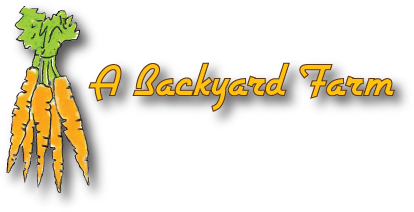Hugelkulture
Hugelkulture is a German word that roughly means "hill culture". Basically, this garden technique involves burying wood along with other organic matter as the foundation of your garden bed. You can use fresh logs, but those that have been in the forest or the wood pile a few years are even better. As the logs begin to decompose, they release nutrients into the soil for the roots of your plants to gobble up. After the first year, minimal watering by the gardener is required. The wood absorbs moisture from the rain and releases it to the plants gradually. During the decomposition process, mychorizal bacteria develop a symbiotic relationship with plant roots, adding more life to the soil from which your plants can benefit.

You have probably seen a tree that has fallen down in the forest. New life quickly begins to colonize this addition to the forest floor. Moss and lichens first do their work, followed by seedlings from new trees. Eventually it sinks further into the forest floor covered by fall leaves. It should always be our goal to mimic nature. Another advantage of this method is that the decomposition of the material warms up the bed to increase plant growth.
How to:
Start by digging a bed no wider than four feet across. It can be any shape you want. A shovel's depth is fine. Set this dirt aside to add later. Gather your materials. Find logs of various sizes and stages of decomposition, finished compost, shredded leaves, fresh grass clipping, compostable vegetable scraps, animal manure, and any extra biomass you can find. One word of caution here: Avoid using wood from black walnut, as it gives off a chemical that prevents other plants from growing; and cedar, which takes forever to break down. Also, do not use grass clippings from lawns that have been treated with synthetic fertilizer, or herbicide.
Once you have all your materials, begin by adding logs of various sizes and states of decomposition. Water them down well. Next add smaller branches on top of them. Following the twigs and branches, fill in between the gaps with manure, compost, grass clippings, kitchen scraps, and any other extra green material you have extra of. The addition of some of the native soil amongst all this material will help introduce microbial activity into the soil. Again, water each layer down. Finally, cover the mound with 2'' of top soil, and a 2'' layer of finished compost of various types. Don't use compost from big box stores however. The main ingredient in this is silica (sand) which will not help your garden. Go to a reputable garden center and buy composted manure, worm castings, mushroom compost, and a general compost.
It is best to start your hugel bed in the fall, so the material has a chance to start breaking down, and settle. Your first spring it is recommended that you don't plant heavy feeders like squash, broccoli, or pumpkins. An ideal start would be legumes (peas and beans) because they produce their own nitrogen. Herbs, salad greens, and root crops are successful also. In late August you can plant a quick growing cover crop like Austrian field peas, crimson clover, hairy vetch, annual or winter rye. If you have never grown a cover crop, it is used to add organic matter and rich nitrogenous material to the soil. Just before winter is about to set in, cut the growth down, and mix in to the first two inches of the soil to break down over winter.
If you are thinking of adding more garden space, consider doing it hugel style!
